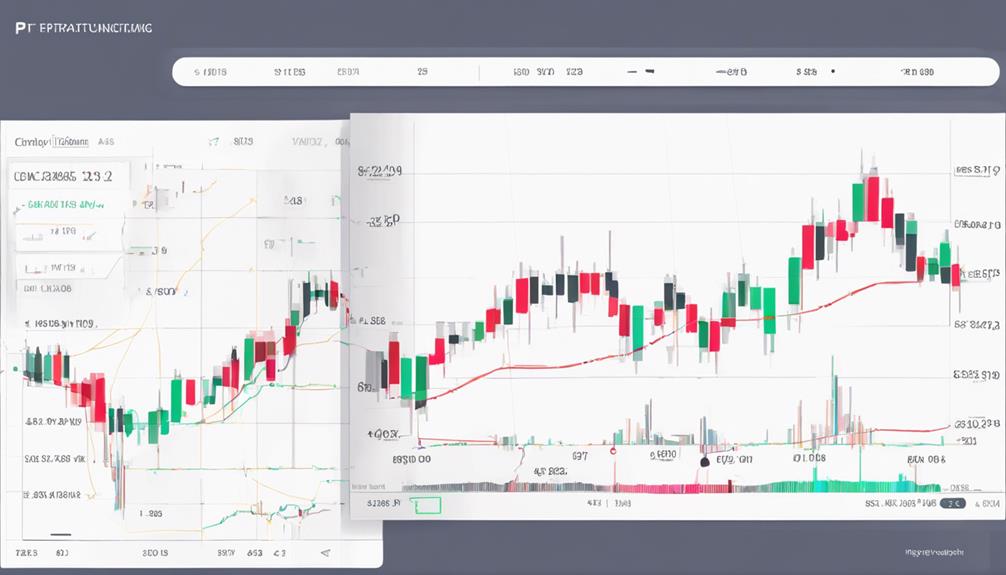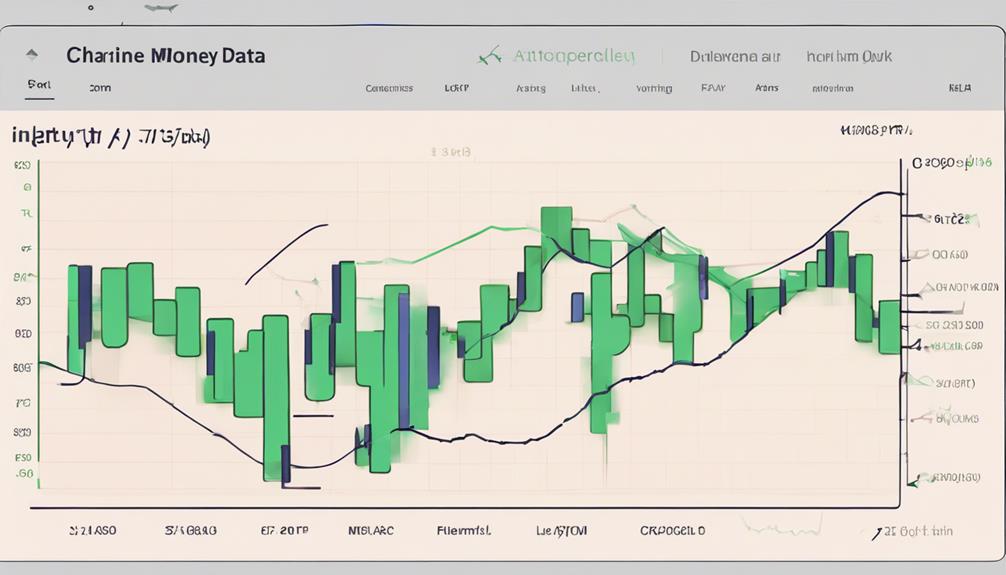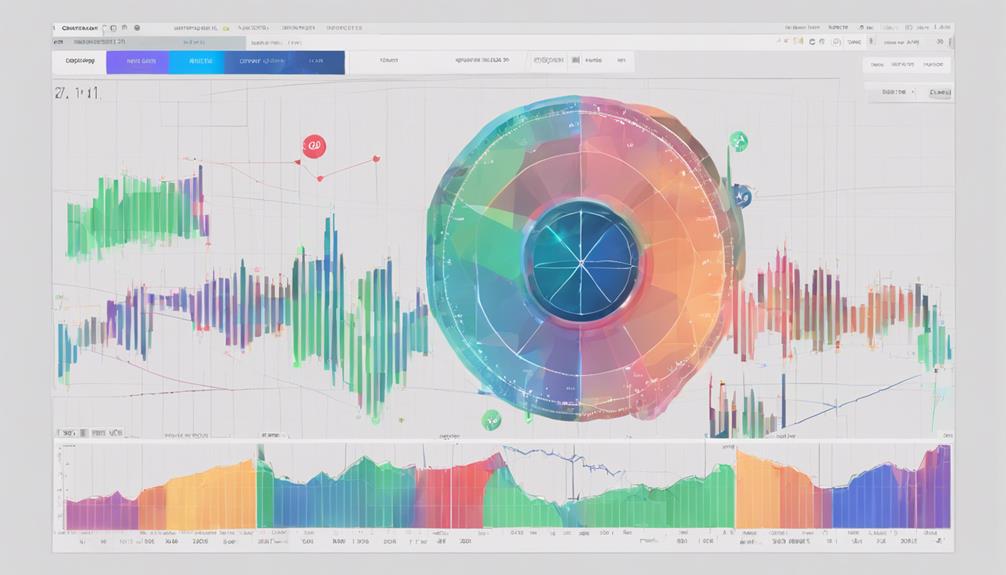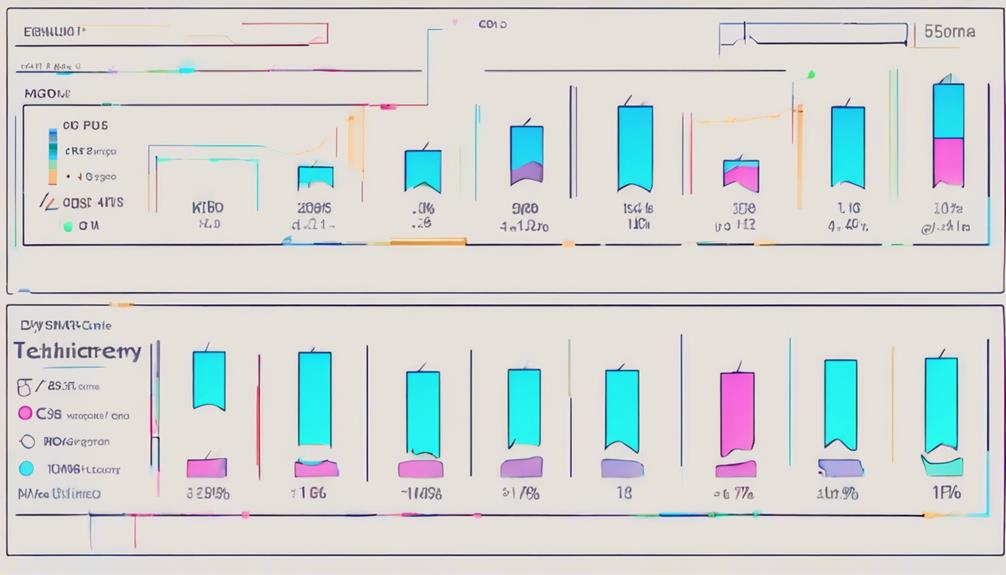The CMF indicator in cryptocurrency trading serves as a valuable tool for investors seeking insights into market dynamics.
By analyzing volume-weighted averages over a 21-day period, the CMF helps identify trends in asset accumulation and distribution.
Understanding how this indicator calculates market strength or weakness can provide traders with crucial information to make informed decisions.
As traders navigate the complexities of cryptocurrency markets, the CMF indicator offers a strategic advantage that may influence their trading strategies.
Understanding Chaikin Money Flow Indicator
The Chaikin Money Flow (CMF) indicator is a vital tool utilized in cryptocurrency trading to gauge the buying and selling pressure based on the relationship of closing prices to highs or lows. This volume-weighted technical indicator, also known as the Chaikin money flow indicator, provides valuable insights into market dynamics by analyzing the flow of money in and out of a cryptocurrency.
Traders rely on the CMF to assess market strength and identify potential trend reversals. Positive CMF values above the zero line indicate buying pressure, whereas negative values below the line signal selling pressure. By examining price movements alongside CMF values, traders can generate valuable trading signals. Additionally, CMF helps validate breakouts from support/resistance levels and detect divergence patterns that may precede significant price movements.
Understanding the nuances of the CMF indicator and interpreting its values accurately are essential for traders seeking to make informed decisions in the cryptocurrency market.
Calculation of CMF Indicator

Calculation of the CMF indicator in cryptocurrency trading involves utilizing the 21-day average of the money flow volume to determine the flow of funds in and out of a specific cryptocurrency.
The Money Flow Multiplier formula is applied, which considers whether the closing price is in the upper or lower half of the daily price range. This calculation helps in assessing the volume-weight relative to the accumulation and distribution of a cryptocurrency.
By analyzing these factors, the CMF indicator provides insights into buying or selling pressure in the market, aiding traders in understanding the strength of money flow.
Through technical analysis, traders can interpret CMF data to make informed decisions based on the relationship between price movements and money flow volume. Understanding the calculation of the CMF indicator is crucial for effectively utilizing this tool in cryptocurrency trading strategies.
Interpreting Chaikin Money Flow Data

Interpreting Chaikin Money Flow Data in cryptocurrency trading involves analyzing the relationship between money flow volume and price movements to gauge market sentiment and potential buying or selling pressure. When interpreting CMF data, traders focus on several key aspects:
- Money Flow Index: The CMF indicator uses volume and recent price movements to determine the strength of money flowing in and out of a cryptocurrency.
- Chaikin Oscillator and Money: The Chaikin Oscillator is calculated using different elements, including the CMF, to generate buy and sell signals based on the relationship between the indicator and the price movements.
- Strength Index: Positive CMF values suggest accumulation and buying pressure, while negative values indicate distribution and selling pressure, providing insights into market sentiment.
- Confirmation of Trends: Traders use CMF data to confirm price trends, identify potential trend reversals, and determine entry and exit points, enhancing their overall trading strategies in the cryptocurrency market.
CMF Indicator Strategies

Analyzing CMF Indicator Strategies provides valuable insights into effectively navigating cryptocurrency trading by leveraging buying and selling pressure indicators. The Chaikin Money Flow (CMF) indicator offers traders the ability to interpret price gains and losses based on the relationship between the closing price and the trading range.
By utilizing CMF, traders can generate buy and sell signals by identifying periods of accumulation or distribution. When the CMF is above the zero line, it suggests buying pressure, indicating potential price strength. Conversely, when the CMF falls below the zero line, it signifies selling pressure and potential price weakness.
Traders can use this technical indicator to confirm trend strength, spot potential reversals, and identify breakout signals in the cryptocurrency market. Customizing CMF with different period settings allows for tailoring strategies to specific cryptocurrencies and trading styles.
Furthermore, combining CMF with other technical indicators can enhance trading decisions and improve overall accuracy, making it a valuable tool for those seeking to deepen their financial education in cryptocurrency trading.
CMF Vs. Other Technical Indicators

When comparing the CMF indicator to other technical indicators in cryptocurrency trading, it stands out for its unique focus on volume-weighted accumulation and distribution, providing insights into buying and selling pressure dynamics in the market.
Here are four key points highlighting the differences between CMF and other technical indicators:
- Oscillator and Money Flow: Unlike traditional oscillators that focus on price action, CMF incorporates volume into its calculations, giving a more comprehensive view of market dynamics.
- Support and Resistance: CMF helps traders identify key support and resistance levels based on volume-weighted analysis, offering a different perspective compared to price-based indicators.
- CMF Value: The CMF value is directly influenced by both price and volume, making it a distinct indicator in assessing market strength and momentum.
- Trading Signals Are Quite Different: While other indicators like RSI or MACD rely on price movements alone, CMF's emphasis on volume can provide unique trading signals that complement and enhance existing strategies.
Understanding these distinctions is crucial in deciding whether to incorporate CMF into your trading toolkit effectively.
What are the Benefits of Using CMF Indicator in Cryptocurrency Trading over MACD Indicators?
When it comes to trading cryptocurrency, choosing CMF over MACD indicators can offer several benefits. CMF, or Chaikin Money Flow, provides a clearer indication of buying and selling pressure, while MACD indicators can sometimes produce false signals. CMF can offer more reliable data for making informed trading decisions in the cryptocurrency market.
Frequently Asked Questions
What Is CMF in Crypto?
In the realm of cryptocurrency trading, CMF, or Chaikin Money Flow, serves as a crucial indicator. It gauges buying and selling pressure through volume-weighted averages, guiding traders on potential trend shifts and aiding in strategic trade entries and exits.
What Is CMF Indicator?
The CMF indicator, an essential tool in trading analysis, quantifies buying and selling pressure within a specified period. Its values help traders confirm trends, spot potential reversals, and determine optimal entry and exit points in cryptocurrency markets.
Is CMF a Good Indicator?
The CMF indicator, when used judiciously alongside other technical tools, can provide valuable insights into buying and selling pressures in cryptocurrency trading. Its effectiveness depends on market conditions and individual trading strategies.
How Do You Trade With CMF Indicator?
Trading with the CMF indicator involves analyzing money flow trends, confirming breakouts, and spotting divergence for potential reversals. Combining CMF with other indicators enhances signal reliability. Mastering CMF interpretation can empower traders to make informed decisions in the volatile crypto market.
Conclusion
In conclusion, the Chaikin Money Flow (CMF) indicator in cryptocurrency trading provides valuable insights into market strength or weakness based on volume-weighted averages. By analyzing the proximity of closing prices to highs or lows, traders can confirm breakout directions, identify buy or sell signals, and understand market trends.
One interesting statistic is that a positive CMF with increasing volume suggests market strength, while a negative CMF indicates weakness, helping traders make informed decisions.
